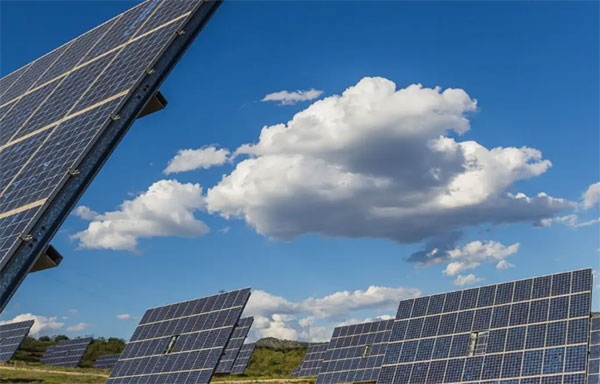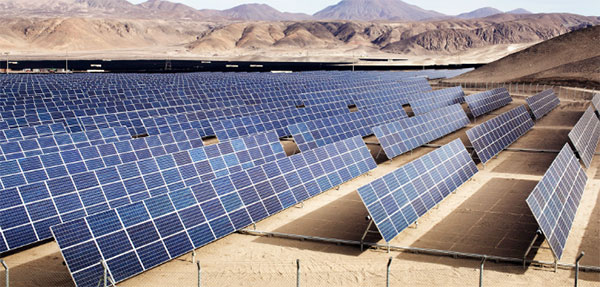Description
Perovskite cells offer higher efficiency, lower cost, flexibility, and better low-light performance than silicon cells.

Overview of Perovskite and Silicon Solar Cells
Perovskite and silicon solar cells represent two significant technologies in the solar energy industry. Perovskite cells, known for their versatile material properties, have emerged as a potential game-changer due to their high efficiency and lower production costs. Silicon solar cells, on the other hand, are the industry standard, known for their reliability and well-established manufacturing processes.
Composition and Design
Perovskite Solar Cells: These solar cells are made from a perovskite-structured compound, often a hybrid organic-inorganic lead or tin halide-based material. Their design allows for thin-film layers that can be fabricated using simple methods like printing. Perovskite cells are notable for their ability to absorb light across different wavelengths, contributing to their high efficiency.
Silicon Solar Cells: Silicon cells are typically made from crystalline silicon, either in monocrystalline or polycrystalline form. These cells are characterized by their rigid, thicker design, requiring more material and energy-intensive production processes. Silicon's bandgap makes it effective for sunlight absorption, a key factor in its widespread use.
Basic Operating Principles
Perovskite Cells: These cells convert sunlight into electricity through the photovoltaic effect. The perovskite material's ability to absorb light induces the creation of free electrons and holes, leading to an electrical current. Their unique composition allows them to operate efficiently even in low-light conditions.
Silicon Cells: Similarly, silicon solar cells work on the photovoltaic principle. When sunlight hits the silicon cell, it excites electrons, creating an electric current. Silicon's crystalline structure is particularly effective in this energy conversion process.
Historical Development
Perovskite Cells: The development of perovskite solar cells began in the early 2000s, with significant advancements in the last decade. Their efficiency has seen a rapid increase, from initial values of below 5% to over 25% in recent years. This swift progression highlights their potential in revolutionizing solar energy.
Silicon Cells: Silicon solar cells have a longer history, dating back to the mid-20th century. Their efficiency has steadily improved over the decades, with current commercial cells averaging around 15-20%. The maturity of silicon technology reflects its reliability and industry dominance.

Efficiency Comparison
The efficiency of solar cells is a critical factor in determining their viability and competitiveness in the solar energy market. It's essential to understand how these efficiencies are measured and the progress achieved in both perovskite and silicon solar cells.
Measuring Solar Cell Efficiency
Efficiency in solar cells is measured by the percentage of sunlight energy that the cell can convert into electricity. This measurement is crucial for comparing the performance of different solar cell technologies under standard test conditions.
- Standard Test Conditions (STC): This includes a temperature of 25°C and an irradiance of 1000 W/m2.
- Maximum Power Point (MPP): Efficiency is often measured at the MPP, where the cell produces its maximum power output.
- Spectral Response: Efficiency also depends on the cell's ability to absorb different wavelengths of sunlight.
Efficiency Achievements in Perovskite Cells
Perovskite solar cells have shown remarkable progress in efficiency in a relatively short time frame.
- Record Efficiencies: As of my last update in April 2023, perovskite cells have reached efficiencies over 25%.
- Tandem Cells: Combining perovskite with silicon or other materials in tandem cells has led to efficiencies surpassing 28%.
- Light Absorption: The broad light absorption spectrum of perovskite materials contributes significantly to their high efficiency.
Efficiency Achievements in Silicon Cells
While not as rapid in their efficiency improvements, silicon solar cells have shown steady progress.
- Commercial Silicon Cells: The average efficiency of commercial silicon solar cells ranges between 15-20%.
- High-Efficiency Variants: Advanced designs like monocrystalline PERC cells have achieved efficiencies around 22-24%.
- Limitations: The theoretical maximum efficiency for silicon solar cells, known as the Shockley-Queisser limit, is about 29-33%.

Cost and Material Availability
The cost and material availability for solar cells are pivotal in determining their commercial viability and scalability. Understanding these aspects helps in assessing the potential for widespread adoption of solar technologies like perovskite and silicon cells.
Material Costs and Sources
The table below provides a detailed comparison of the material costs and sources for perovskite and silicon solar cells:
| Material |
Perovskite Solar Cells |
Silicon Solar Cells |
| Primary Materials |
Lead halide, tin halide |
Crystalline silicon |
| Cost |
Lower cost due to abundance and simplicity in processing |
Higher cost owing to purification and crystallization processes |
| Source Availability |
Widely available, less energy-intensive to process |
Abundant but requires intensive energy for processing |
| Environmental Impact |
Concerns over lead content; research into alternative materials ongoing |
Energy-intensive production but recyclable |
| Scalability |
High potential due to simpler manufacturing processes |
Established but energy and cost-intensive scaling |
Production Techniques and Scale
Perovskite Solar Cells:
- Simpler Manufacturing: Utilizes techniques like printing and coating, which are less energy-intensive and more scalable.
- Rapid Development: Recent advances have enabled quicker and more cost-effective production methods.
- Flexibility in Design: Allows for integration into various applications due to their lightweight and flexibility.
Silicon Solar Cells:
- Established Manufacturing: Involves complex processes like Czochralski process for monocrystalline silicon and casting for polycrystalline silicon.
- Economies of Scale: Large-scale production has become more efficient and cost-effective over time.
- Material Limitations: The production process is energy-intensive, impacting the overall environmental footprint.

Durability and Lifespan
The durability and lifespan of solar cells are critical factors in assessing their long-term value and environmental impact. These aspects directly influence the return on investment and the overall sustainability of the solar energy technology.
Longevity of Perovskite Cells
Perovskite solar cells have shown significant promise in terms of efficiency, but their longevity remains a challenge:
- Current Lifespan: Typically, perovskite cells have a shorter lifespan compared to silicon cells, often around several years under optimal conditions.
- Degradation Factors: They are sensitive to environmental factors like moisture, heat, and UV radiation, which can accelerate degradation.
- Recent Improvements: Advances in encapsulation and stabilization techniques are extending their operational life.
Longevity of Silicon Cells
Silicon solar cells are known for their robustness and long lifespan:
- Average Lifespan: These cells usually last for 25 to 30 years, with some even exceeding this range.
- Degradation Rate: They have a slow degradation rate, typically losing about 0.5% efficiency per year.
- Proven Durability: Silicon cells have a proven track record of withstanding various environmental conditions.
Comparative Environmental Impact
The environmental impact of both types of solar cells extends beyond their operational lifespan:
- Perovskite Cells:
- Lower initial environmental impact due to simpler production processes.
- Concerns over the use of lead and its disposal at the end of the cell's life.
- Continuous research is focused on developing lead-free perovskite cells.
- Silicon Cells:
- Higher energy consumption in manufacturing, but recycling processes are more established.
- Long lifespan reduces the frequency of replacement and associated environmental costs.
- Silicon is non-toxic and more environmentally friendly at the end of its lifecycle.

Performance in Varied Climates
The performance of solar cells in varied climatic conditions is crucial for their global applicability and efficiency. Both perovskite and silicon solar cells have distinct responses to extreme environmental conditions, which affects their suitability in different geographic locations.
Perovskite Cells in Extreme Conditions
Perovskite solar cells show unique characteristics under various climatic extremes:
- High-Temperature Performance: Perovskites tend to perform well in higher temperatures compared to traditional silicon cells, showing less efficiency loss.
- Sensitivity to Moisture and Humidity: They are highly sensitive to moisture, which can lead to rapid degradation unless properly sealed.
- Performance in Cold Climates: In colder conditions, perovskite cells maintain good performance, although their long-term stability in such environments is still under research.
Silicon Cells in Extreme Conditions
Silicon solar cells have a longstanding history of performance in diverse climates:
- Heat Sensitivity: Efficiency in silicon cells generally decreases in high temperatures, affecting performance in hot climates.
- Durability in Harsh Conditions: They are known for their robustness in harsh environmental conditions, including high moisture and extreme cold.
- Consistent Performance Over Time: Silicon cells offer reliable and consistent performance over a wide range of climatic conditions, which is a significant factor in their widespread use.








